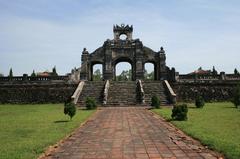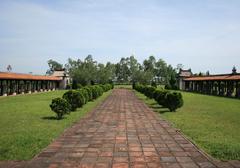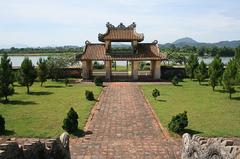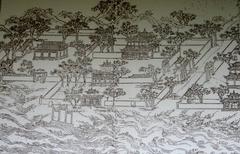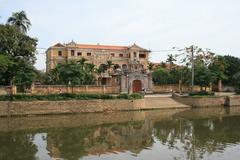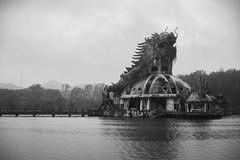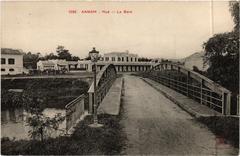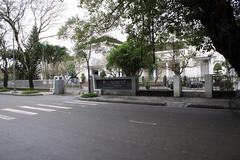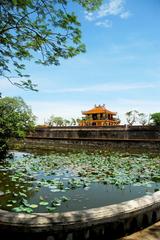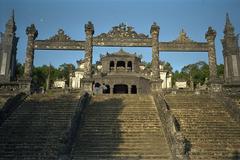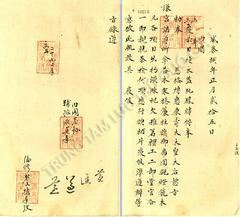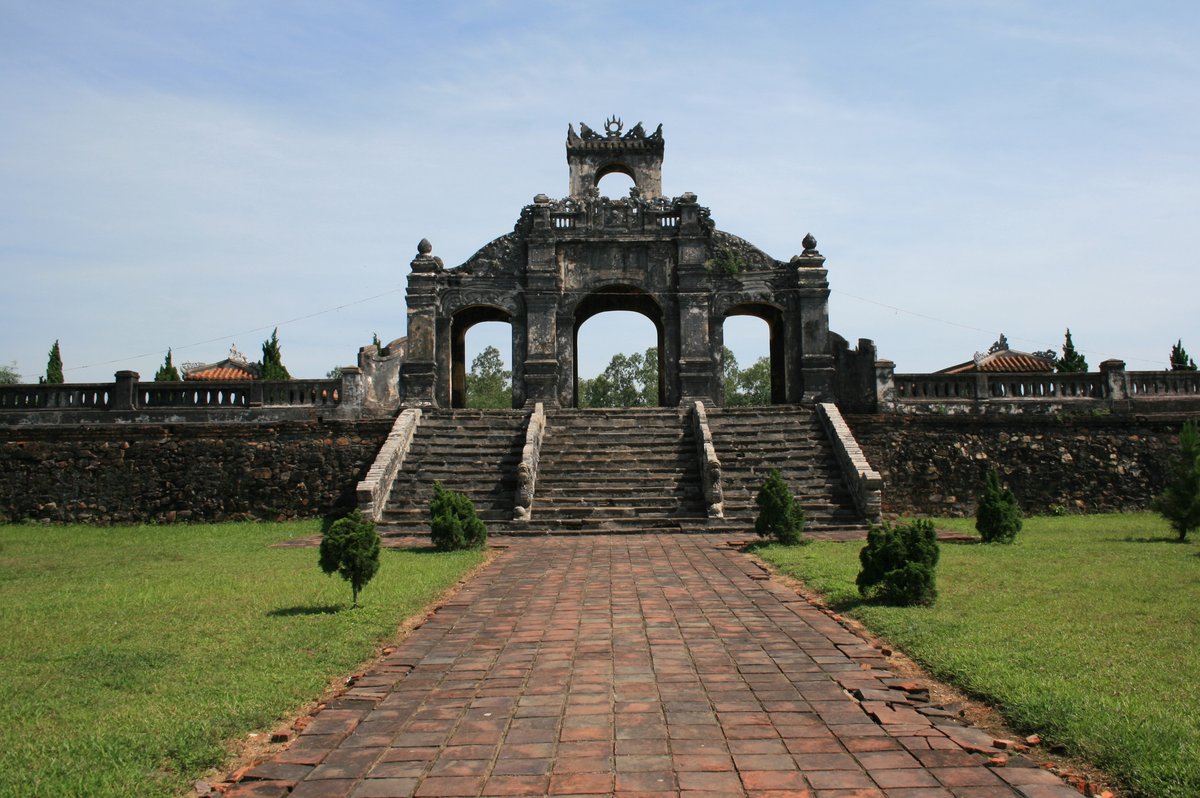
Temple of Literature Huế: Visiting Hours, Tickets, and Guide to Huế Historical Sites
Date: 15/06/2025
Introduction
The Temple of Literature in Huế (Văn Miếu Huế or Văn Thánh Miếu) stands as a testament to Vietnam’s enduring reverence for Confucian values, scholarly achievement, and imperial tradition. Established in 1808 under the Nguyễn Dynasty, it was modeled after the iconic Temple of Literature in Hanoi but possesses unique architectural and historical features that reflect the cultural identity of Huế. Nestled on the tranquil banks of the Perfume River, this venerable site has long served as both a ceremonial center and a hub for academic excellence, hosting imperial examinations and celebrating the achievements of scholars whose names are immortalized on stone steles. Today, the Temple of Literature welcomes visitors seeking to immerse themselves in Vietnam’s intellectual heritage, explore its symbolic architecture, and enjoy a peaceful retreat amid Huế’s historical landscapes. This guide delivers detailed information on visiting hours, ticketing, accessibility, travel tips, and nearby attractions, ensuring you maximize your experience at one of Vietnam’s most treasured historical sites (Vietnam Vacation; Vietnam Discovery Tours; Vietnam Online).
Table of Contents
- Introduction
- Historical Background
- Visiting the Temple of Literature Huế
- Multimedia & Visual Resources
- Frequently Asked Questions
- Conclusion and Recommendations
- References
Historical Background
Origins and Development
The Temple of Literature in Huế was initially constructed in Trieu Son village and later relocated to Long Hồ village in 1770, reflecting the Nguyễn lords’ strategic expansion and their commitment to Confucian ideals (Vietnam Vacation). In 1808, under King Gia Long, the site was formally established at its current location in Hương Hồ Commune, about 7 km from Huế’s city center, chosen for its auspicious feng shui and serenity by the Perfume River.
Architectural Evolution
The temple’s architecture exemplifies traditional Vietnamese design, particularly the “one floor double roofs” style. The complex has undergone several restorations—most notably in 1818, 1822, 1895, 1903, and after the First Indochina War—preserving its integrity as a spiritual and educational center (Culture Pham Travel).
Confucian Influence and the Nguyễn Dynasty
During the Nguyễn Dynasty (1802–1945), the temple functioned as a focal point for Confucian worship, state ceremonies, and the imperial examination system. It hosted major rituals honoring Confucius and other sages and played a pivotal role in nurturing Vietnam’s scholarly elite. The 32 stone steles, mounted on tortoise-shaped pedestals, commemorate 293 successful doctoral candidates, symbolizing longevity and wisdom (Vietnam Vacation).
Key Features
- Stele of Doctors: Engraved with the names and origins of scholars who excelled in imperial exams.
- Dai Thanh Mon (Main Gate) & Dai Thanh Dien (Worship Hall): Central to ceremonial life and worship.
- Honored Sages: Confucius, Mencius, Yan Hui, Zengzi, Zisi, and 72 Confucian scholars are venerated, reflecting the temple’s educational legacy (Culture Pham Travel).
Visiting the Temple of Literature Huế
Visiting Hours
- Open daily: 7:00 AM – 5:00 PM
- Best times: Early morning or late afternoon for a tranquil experience and optimal lighting for photography.
Ticket Details
- Entrance Fee: Typically 30,000 VND for adults (approximately 1.3 USD), with discounts for students, seniors, and groups. Tickets can be purchased on-site; check official websites for updates.
Accessibility
- The temple complex is moderately accessible, with paved walkways in main areas. Some sections have steps or uneven surfaces; assistance is available at the entrance for visitors with mobility needs.
Tips for Visitors
- Getting There: The site is about 7 km from Huế’s city center. Accessible by taxi, motorbike, bicycle, or local bus. A riverside bike ride offers a scenic approach.
- Guided Tours: Available through local operators and recommended for deeper historical context.
- Dress Code: Modest attire is advised—cover shoulders and knees to show respect.
- Etiquette: Maintain a quiet demeanor, especially during ceremonies or in main halls.
- Photography: Allowed in most outdoor areas; avoid flash and tripods inside sacred spaces.
Nearby Attractions
Enhance your itinerary by visiting these Huế historical sites, all within easy reach of the Temple of Literature:
- Thien Mu Pagoda: Iconic seven-story pagoda with panoramic views over the Perfume River (Vietnam Discovery).
- Imperial City (Citadel): UNESCO World Heritage Site featuring palaces, temples, and the Forbidden Purple City.
- Tu Duc Tomb: A landscaped royal mausoleum with lakes and pavilions.
- Khai Dinh Tomb: Ornate blend of Eastern and Western architecture.
- Dong Ba Market: Bustling local market for food and handicrafts.
- Perfume River Cruises: Scenic boat rides including stops at major landmarks.
- Quoc Hoc Hue High School: Historic French colonial school.
- Hon Chen Temple, Huyen Tran Princess Temple, Ho Quyen (Tiger Arena), Dien Voi Re (Elephant Temple): Sites reflecting Huế’s religious and royal heritage.
- Bach Ma National Park: Nature reserve ideal for hiking and birdwatching (Vietnam Online).
Multimedia & Visual Resources
- Images: Photos of the main hall, steles courtyard, entrance gate, and festival scenes (alt tags: “Temple of Literature Huế main hall”, “Steles at Temple of Literature Huế”).
- Maps: Interactive maps showing the temple’s location and nearby attractions.
- Virtual Tours: Available through official tourism platforms and some travel agencies.
Frequently Asked Questions (FAQ)
Q: What are the Temple of Literature Huế’s opening hours?
A: Daily from 7:00 AM to 5:00 PM.
Q: How much is the entrance ticket?
A: 30,000 VND for adults; discounts for students and seniors.
Q: Is the temple accessible for people with disabilities?
A: Main areas are accessible, but some sections may require assistance.
Q: Are guided tours available?
A: Yes, arrangeable on-site or through local travel agencies.
Q: Is photography allowed?
A: Yes, in most areas; restrict flash and tripods indoors.
Q: What are other must-see Huế historical sites nearby?
A: Thien Mu Pagoda, Imperial City, royal tombs, Dong Ba Market, and more.
Conclusion and Recommendations
The Temple of Literature Huế is a cornerstone of Vietnam’s intellectual history and Confucian tradition. Its harmonious setting, well-preserved architecture, and commemorative steles offer a compelling destination for history enthusiasts, culture seekers, and travelers alike. Plan your visit around the temple’s daily hours, consider joining a guided tour for deeper insight, and explore the wealth of nearby Huế historical sites for a truly enriching journey.
For updated visitor information, ticketing options, and travel inspiration, download the Audiala app. Explore our related articles on Huế’s historical and cultural treasures, and follow us on social media for the latest travel tips and event updates.
References and Further Reading
- Temple of Literature Huế: Visiting Hours, Tickets, and Historical Insights, 2025, Vietnam Vacation
- Huế Temple of Literature: History, Visiting Hours, Tickets, and Cultural Significance, 2025, Vietnam Discovery Tours
- Temple of Literature Huế Visiting Hours, Tickets, and Architectural Guide to Huế Historical Sites, 2025, IZITour and Guide to Hanoi, https://guidetohanoi.com/see-and-do/historical-monuments/temple-of-literature/
- Visitor Experience and Nearby Attractions, 2025, Vietnam Online and The Blond Travels, https://www.theblondtravels.com/one-day-in-hue-all-you-need-to-know-before-you-visit
